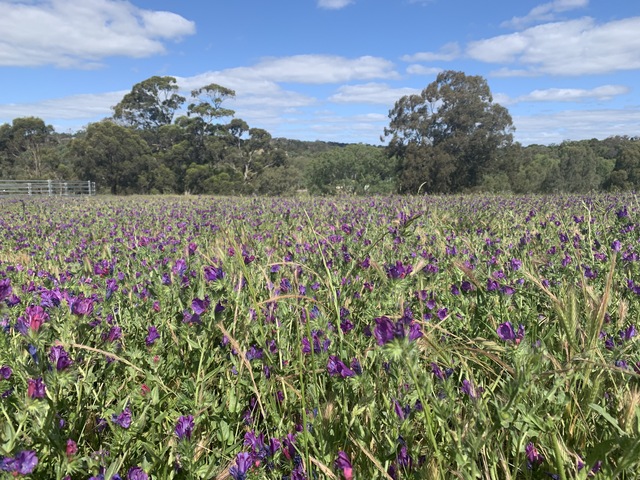You may have noticed a greater prevalence of Salvation Jane (Echium plantagineum) in paddocks and roadsides in recent weeks.
Local Northern and Yorke Landscape Board officers say it was a temporary resurgence of the purple weed, with drought-affected bio-controls now in a rebuilding phase.
Landscape officer Morgan McCallum said the bio-controls were expected to recover from the drought and tackle the declared pest plant.
“Last year due to drought conditions, there was very little Salvation Jane that germinated or flowered in many areas of Northern and Yorke, and the biocontrol didn’t get a chance to breed and spread populations,” she said.
“The biocontrol is still present, but it needs a ‘good season’ of Salvation Jane to re-populate into larger numbers.
“Next season we would expect the numbers to have improved and see the biocontrol being far more effective again on Salvation Jane.”
Salvation Jane is an annual weed that forms large rosettes made up of broad oval leaves.
Plants produce tall, flowering stems with purple/blue flowers in spring and early summer.
Salvation Jane contains pyrrolizidine alkaloids which cause accumulative chronic liver damage, loss of condition and occasionally death, particularly affecting horses and pigs.
In South Australia, there are five species of bio-control insects helping control the purple weed.
Each of the five insect varieties target different parts of the Salvation Jane plant, including the leaves, roots, crown and flowers, providing one of the most comprehensive and successful biocontrol options.
“Because we have visually been seeing a lot more Salvation Jane in paddocks and on roadsides, we have had an increase of landholder enquires for biocontrol information,” Ms McCallum said.
“I’d encourage landholders to get in contact their local Northern and Yorke Landscape Board office, or refer to the website, for more information about Salvation Jane and bio-controls.”







